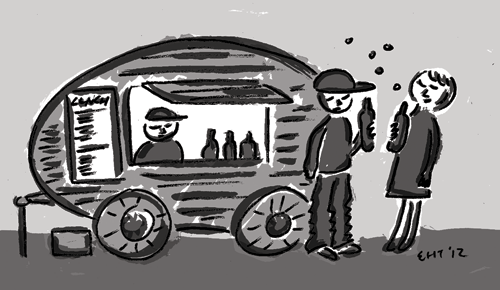Portland State may become home to a living building by the end of 2013. All builders are waiting for is the legislature’s approval of $37 million in bonds to breathe life into the project, whose fate will be decided this February.
Waiting for rain
Portland State may become home to a living building by the end of 2013. All builders are waiting for is the legislature’s approval of $37 million in bonds to breathe life into the project, whose fate will be decided this February.
Since the project started in 2007, $25 million has already been obtained from partners, donors and other sources to fund the Oregon Sustainability Center, which brings the total cost of the project to $62 million. That’s $434 per square foot—not a negligible amount by any means. It’s even a downgrade since the initial proposal.
Because of the tanking economy, the former 220,000 square foot design has been lessened to 130,000 to ensure that there will be minimal empty rental spaces. However, even with this adjustment, there’s always the chance that those spaces still won’t get rented. Larger buildings are, after all, more cost efficient, meaning the increased price per square foot in the OSC will drive up those rental costs.
“This building is a first of its kind prototype of how buildings should be built and it simply cost more to construct something this new,” said Mark Gregory, associate vice president of Finance and Administration at PSU.
“Despite this leverage of state dollars these are difficult times and many legislators are feeling the need to be very conservative—it may be a challenge to get passage in that climate—but we are trying because this project will create jobs in both the long and the short terms,” Gregory said.
An estimated 700-plus jobs will result from the legislature’s approval of the building, including construction work, retail positions and research jobs. These would theoretically draw $7.8 million in grants to PSU. Also, many of the components of the building would be obtained from local businesses, thereby stimulating the local economy.
“Most of the OSC’s materials and its technologies are coming from Oregon companies,” Gregory said. “Sustainability companies here are among the best in the world and many are participating in this project as suppliers, donors or tenants.”
This is in accordance with the Living Building Challenge, which stipulates that materials for the project should come from local sources.
According to its website, the Living Building Challenge “is a philosophy, advocacy tool and certification program that addresses development at all scales. It is comprised of seven performance areas: Site, Water, Energy, Health, Materials, Equity and Beauty.”
Part of qualifying as a living building means having net-zero energy and water performance, which basically means that the building must produce as much energy as it consumes.
The plans state that the OSC’s water will be treated and reused on site. Solar panels and geothermal energy will eliminate carbon emissions entirely to provide a toxin-free environment for tenants. Sensors in the building will also report back on tenants’ energy usage in order to change wasteful habits—in a very real way, the OSC will be a “living” reminder to us to use our resources more wisely.
The proposed location is on Southwest 4th Avenue and Montgomery Street, a prime spot for students as it would be adjacent to the Academic and Student Recreation Center and the Portland State Bookstore. If the OSC is built, students and faculty of sustainability will most likely be relocated, as a new lecture hall that holds 350 people and several small classrooms are included in the design.
Not only that, but students interested in sustainability will be able to see firsthand the cutting-edge technologies that are changing our conceptions of energy and building design, and be able to use these new ideas in their future endeavors.
“Building efficiency is a critically important issue for the U.S. and the world,” Gregory said. “According to the U.S. Department of Energy, in the U.S. 40 percent of our energy is used in buildings and only 28 percent for all forms of transportation—so this is a big problem to solve with a huge payoff.”
The funds needed to complete a project of this magnitude are daunting at this economically tense time, but while the drawbacks are all speculative, the benefits are assured. From this living model, we can learn to live a little better.



